Roots in Heaven, Branches on Earth
Nothing sounds more idolatrous than drawing God. The God of the Jews has long been said to transcend and despise images. Despite all this, J. H. Chajes’s remarkable new book unveils not just a few stray Jewish visualizations of God but a veritable genre devoted to mapping and diagramming divinity. The Kabbalistic Tree tells the story of ilanot, the most common term for a large group of manuscripts and printed texts that represent, in Chajes’s phrase, “the iconotextual signification of the divine order.” In other words, an ilan, a kabbalistic tree,is a combination of images and words that represents the fundamental structure of kabbalistic thought: the sefirot, the ten emanations or attributes through which the Infinite God (Ein Sof) is revealed to the finite world of creation.
In its most common form, an ilan consists of ten circles, one for each sefira. These circles are linked with lines or channels, arranged in three columns, and distributed vertically with the highest sefira of Keter, or crown, at the top and the lowest sefira of Malkhut, or kingdom, at the bottom. The kabbalists—that diverse bunch of Jewish visionaries and scribblers—used such diagrams to speculate on God and the cosmos, frequently inscribing their ilanot on long scrolls. Featuring bold shapes and blocks of text splayed out over parchment sheets, ilanot are instantly striking, as intriguing as they are obscure. But they are more than just precious religious and artistic artifacts, or even a “forgotten genre” of Jewish esoterica. Thanks to Chajes’s lively and thoughtful presentation, ilanot emerge as material objects with larger implications.
Diagrams of the sefirot are found not only in medieval manuscripts; ilanot are ubiquitous in contemporary Jewish graphics, from book covers to branded apparel, from stained-glass windows to Israeli election flyers. The historical narrative of The Kabbalistic Tree leads us through the backstory of this familiar but little understood image. Moreover, Chajes’s book poses urgent questions about the relationships between science and spirituality, Jews and Gentiles, and the past and the present.
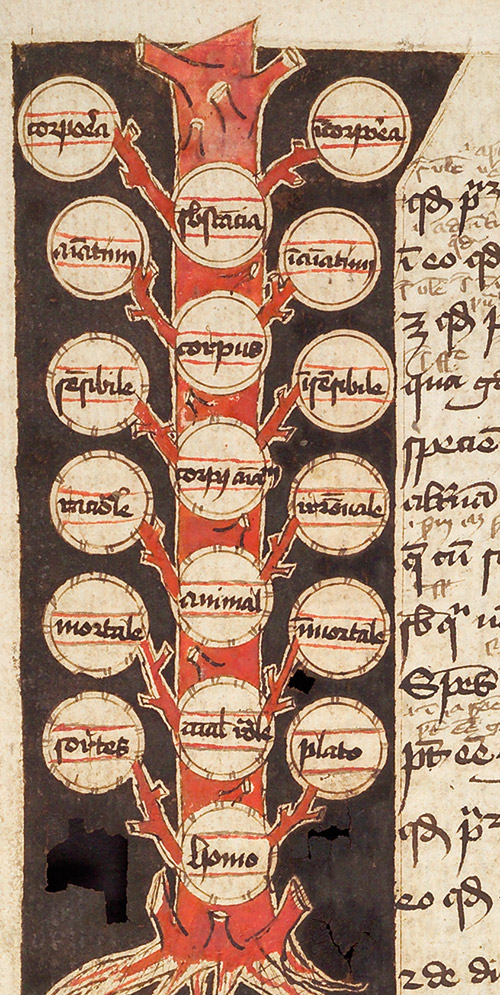
Rooted in mythic midrash and Neoplatonic symbolism, medieval Jewish esoteric traditions known collectively as Kabbalah never shied away from vivid images. Almost every page of the Zohar, to take the most classic of examples, sparkles with fiery chariots and elemental lights, paradisical rivers and strange birds. Many kabbalistic books, including numerous lexicons, are devoted to decoding this kaleidoscopic imagery in terms of the ten sefirot and the other divine emanations. In this poetic symbolism, water means the sefira of Chesed (lovingkindness) and fire means Gevura (harsh strength), while the sun and the moon represent masculine and feminine energies. Early Kabbalah also posited that the structure of the divinely emanated macrocosmos maps onto the microcosmos of the human body. As it happens, both look a lot like trees. As Gershom Scholem put it in Major Trends in Jewish Mysticism, “The two most important images used [to represent the sefirot] are that of the tree . . . and that of the man.” Although the infinite is beyond any conception, there is a fundamental parallelism between the emanated worlds, the human frame, and the form of a tree.
Why a tree? Although Chajes cites the myth of the “All-Tree,” which appears in many cultures, and the two trees in the Garden of Eden, he settles on another more surprising source: medieval science. Alongside the concentric circles used to represent the heavenly spheres in astronomical tracts—which also feature in kabbalistic graphics—tree diagrams were the most prevalent scientific figures of their day. Take the so-called Porphyrian tree, which “was an information graphic, akin to today’s Venn diagram, ideally suited for mapping abstract relations of all kinds.” Like the kabbalistic tree, the Tree of Porphyry consists of a central column of medallions from which other circles branch off; it illustrated philosophical hierarchies such as Aristotle’s categories. A similar diagram was often used to map family trees, including that of Jesus. In both cases, circles represented concepts or entities, while lines represented forms of relationship, whether logical or genealogical. With a hint of theological anxiety, Chajes highlights another advantage of the arboreal schema: it “was not an iconic signifier.” Notwithstanding their love of drawings, most kabbalists took divine incorporeality as axiomatic. The tree represented causal connections between the sefirot, but it did not resemble any spatial arrangement. In this way, the kabbalists dodged an anthropomorphic bullet: their “maps of God” show how the sefirot relate to one another and to the world, not what divinity actually looks like.
One of Chajes’s central claims is that Kabbalah was a lot like science. First and foremost, this comparison does what any good comparison is meant to do: it helps readers grasp a less familiar field with the help of a more familiar one. A paragraph at the beginning of the book, snappily titled “A Note to Those Looking for More or Less Than This Book Offers,” is a case in point:
Were this a book about Euclidean diagrams, few readers without a background in geometry would expect to get much out of it. I nevertheless presume that many of my readers will hope—or even expect—this book to provide the background required to appreciate ilanot. Although I have written primarily for other scholars, I have not forgotten that many reading these lines are more interested in than educated in the subject.
Chajes is a virtuoso of the analogy and the apt example. He draws heavily on references to both science and popular culture, from Blaise Pascal and Ludwig van Beethoven to Steve Jobs. While Chajes tries to “go easy on the math,” his writing does not skimp on sophistication. He draws on a rich body of academic literature on the visualization of knowledge, summarizes complex kabbalistic processes, and deploys his own set of abbreviations to describe the component parts of ilanot. His simplified scientific comparisons often feel like clearings in a dense forest.
But Chajes’s juxtaposition of Kabbalah and medieval science goes much deeper. As already mentioned, the basic components of kabbalistic iconography (circles and trees) emerged from astronomy and natural philosophy. Kabbalists borrowed other bits of terminology from medieval scientific discourse, and early modern scientists like Leibniz and Newton had their own healthy interests in Kabbalah. There is, however, an even more profound connection at play. Chajes argues that there is a structural similarity between Kabbalah and science. Both aspired to systematic and detailed knowledge of the cosmos:
Kabbalah has many secrets but little mystery. For this reason more than any other, most kabbalists would have recoiled at the thought of being considered mystics. They often conceived of the sefirotic tree mechanistically, in technical terms we typically associate with the hard sciences. . . . The tree is the dynamically responsive substratum of reality. This is the meaning of theurgy in the kabbalistic context: the belief that human action—including thought—affects the operation of this underlying structure.
Unlike the mystics of other traditions—say, the meditative Teresa of Ávila or the rapturous Rumi—Chajes claims, somewhat controversially, that the kabbalists were devoted to esoteric knowledge but not to ineffable experiences. Even theurgy, the presumed impact of intentional prayer and other contemplative practices on God via the sefirot, is an expression of an almost mechanistic worldview, a pious variation on the butterfly effect. This argument reflects classic questions within Kabbalah studies concerning experiences of divine unity as well as current debates over the relevance of the term “mysticism.” Chajes moves these conversations forward by situating Kabbalah within the history of medieval and early modern science; if Kabbalah is not about mystical experience, how else can it be understood? Both kabbalists and scientists wanted to accumulate knowledge about their whole worlds—and both used diagrams to map out the totality of what they knew. Fittingly, the visual vocabulary of the ilanot anchors Chajes’s assertions, giving shape and form to historical abstractions. Taking his cue from historians of science, Chajes looks at science and Kabbalah alike as modes of knowledge production, not as sets of objective facts. If the intellectual motivations of the kabbalists can be compared to those that drive scientists, perhaps the boundaries between these forms of knowledge are more porous than we had assumed.
And yet, although it is undoubtedly true that much of kabbalistic literature is more focused on technical expositions than on transcendent or transformative experiences, the world of the kabbalists was still populated by angels and demons, spirits of the dead, oracular maggidim and numerous occult phenomena. Was there no affective, emotional, even mystical component to kabbalistic life? At times, Chajes pushes his scientific reading too hard:
Jewish life in all its detail was a laboratory. Scientists who work in laboratories are charged with carrying out their work with precision; the subjective experience of the technician is rarely salient to lab work, the processes and results of which are objective. Kabbalistic discourse is characterized, with few exceptions, by just such an approach to the Divine and its tikkun.
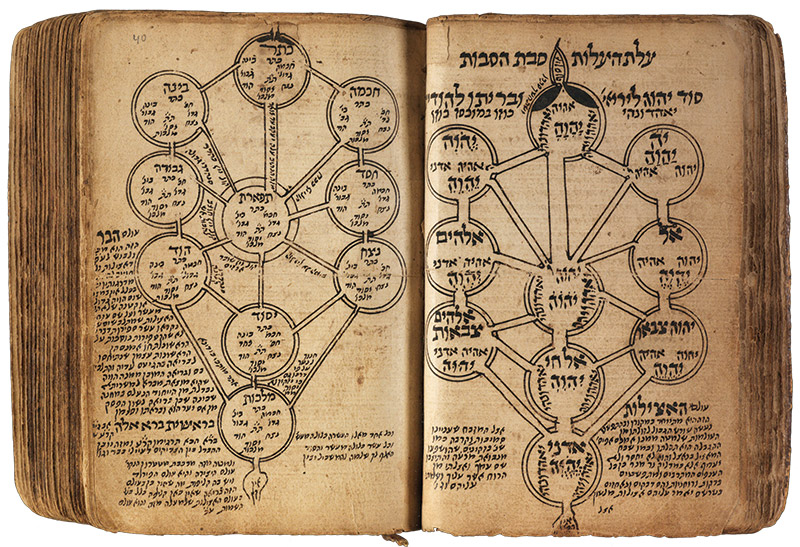
the National Library of Israel.)
Is it fair, to either the scientist or the kabbalist, to say that they are wholly dispassionate? Chajes himself knows better. Just a few pages later, he affirms that “the ilan is, perhaps more than anything, a devotional instrument . . . an image presumed to make its referent immanent and to invite the contemplative on a journey of imaginal pilgrimage.” When one scrolls through an ilan, one mimetically re-creates the cosmos and visits supernal realms. Of course, there is no necessary contradiction between precision and piety. Ilanot reflect a world of intensely creative practice; they bridge materiality and metaphysics, exactitude and devotion. Making an ilan can be both an art and a science.
Elsewhere, Chajes emphasizes the use of ilanot not just as tools of meditative study but as magical amulets marketed to less learned audiences. In such contexts, Chajes is not reticent about the fact that ilanot were often, in some important sense, depictions of God: “The image of the Divine delivers its presence. This presence facilitates its performative diversity and distinguishes the ilan as a cornerstone of kabbalistic practice, even as it endows it with apotropaic power.” The ilan, then, is not just a theoretical schematic. Rather, ilanot testify to the manifold interactions between God and creation, to the strivings of human subjectivity, and even to the simple need for a good luck charm.
The Kabbalistic Tree is a massive and subtle synthesis of textual and visual evidence from across the world. Chajes’s book begins in the thirteenth century with the earliest kabbalistic diagrams and quickly hones in on “the classical ilan,” primarily covering manuscripts and rotuli (vertically oriented scrolls) produced in Italy through the end of the sixteenth century. These arboreal diagrams are quite spectacular, but they represent only the ten sefirot and some associated topics. Chajes’s analysis really takes off in the second third of the book, when he enters the sixteenth-century world of Lurianic Kabbalah, the incomparably complex systems attributed to Isaac Luria of Safed. Lurianic Kabbalah was far more elaborate than classical Kabbalah, encompassing not only ten sefirot but numerous cosmological stages: void and point, circles and lines, the luminous Adam Kadmon (primordial man) and the five primary Partzufim, or divine faces, each of which was composed of ten sefirot and interconnected in complex patterns known as “enrobings.” As kabbalistic knowledge took new forms, kabbalists developed new visual techniques; in Chajes’s words, the Lurianic ilan was “more akin to a timeline than a map.”
The disparities between classical and Lurianic Kabbalah are a central interest for traditional kabbalists and academic scholars alike, and Chajes maps some major trends and key moments on Kabbalah’s historical timeline. Particularly in his treatments of the ilanot of the seventeenth century, Chajes breaks important new ground, treating topics that have rarely been discussed in any European language, or even in Hebrew scholarship. With a genius for pithy characterization, Chajes introduces us to a range of historical figures, from the relatively familiar like Moshe Chaim Luzzatto to the fairly obscure: Nosen Neta Hammerschlag, anyone? He also discusses a wide range of geographical contexts from Kurdistan to Amsterdam, from Yemen to New York. The book closes with compelling treatments of printed ilanot, of the use of ilanot as amulets, and of contemporary artistic renditions of the genre.
Chajes reminds us more than once that he can cover only some of the vast world of ilanot and that he intentionally excluded most Christian kabbalistic diagrams. Still, the role of Christian Hebraists and kabbalists in the book deserves mention. The introduction opens with a quote from the sixteenth-century Catholic kabbalist Guillaume Postel, and other Christian Hebraists get ample airplay. Perhaps no name is more frequently mentioned than that of Christian Knorr von Rosenroth, the seventeenth-century German scholar of Kabbalah, and that’s for good reason. Knorr’s Latin anthology of kabbalistic texts, Kabbala Denudata, faithfully reproduced several important Lurianic ilanot. Completing the circle, several of Knorr’s original diagrams were integrated into Jewish ilanot over the coming centuries.
Trained as an early modern Europeanist, Chajes feels at home in the Christian context. Take his discussion of Jacob Zemah, probably the foremost architect of seventeenth-century Lurianic literature. Zemah was a Portuguese converso who returned to Judaism in Salonica; Chajes rightly emphasizes Zemah’s humanist education and acquaintance with Latin occultism. Future studies of ilanot would do well to also consider non-Christian contexts, particularly Islam. Just this year, an edited volume titled Visualizing Sufism was published, and other research on diagrams in Islamic occultism is forthcoming. The Lurianic ilan was, after all, conceived in the Ottoman Empire. And although Chajes insists at one point that “ilanot are not mandalas,” there are probably helpful insights to be gained from the interplay of visuality and ritual in occult traditions like alchemy and tantra.
Why has it taken so long for anyone to write a monograph of this scope about visual Kabbalah? Chajes modestly says that “even though The Kabbalistic Tree may be the first book on the subject, it is only the first book on the subject.” (It is not the first book on kabbalistic diagrams, broadly speaking; The Kabbalistic Tree was preceded by Giulio Busi’s Qabbalah Visiva of 2005, Marla Segol’s 2012 monograph Word and Image in Medieval Kabbalah, and several important articles by Daniel Abrams.) But the range of The Kabbalistic Tree is so astounding, and the material so rich, that the question remains. One answer, Chajes argues, has to do with a general trend within Western culture: “The invisibility of ilanot in modern research is primarily the result of a deep-rooted bias against visual forms of knowledge.” That said, plenty of theorists—from the kabbalist Nazirite David Cohen of Jerusalem to the intellectual historian Martin Jay of Berkeley—have suggested that the West has in fact been marked by ocularcentrism, by a privileging of the visual. So maybe there are other answers to the question of why ilanot, and why now.
Chajes deserves the credit for bringing ilanot into the limelight, but he repeatedly acknowledges that his project has always been collaborative. The story begins with Menachem Kallus, an erudite Kabbalah scholar and independent researcher, and William Gross, a businessman and passionate manuscript collector. As Gross writes in his “Collector’s Afterword,” Kallus contacted him in 2005 about lending some ilanot to a museum exhibition; Gross agreed and invited Kallus to study his collection. Chajes got wind of Kallus’s research and procured funding from the Israel Science Foundation to establish a research group in 2008.
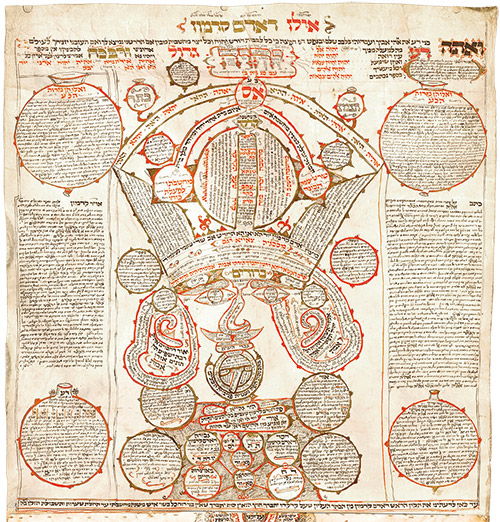
Having a collector write an afterword for an academic monograph is unusual, but Gross’s praiseworthy commitment to transparency is also sadly unusual. In too many cases, the acquisition of Hebrew manuscripts by private collectors is a death sentence for future research. Artifacts surface at public auction, then quickly disappear into private hands. In sum, Chajes’s book—marked by his inimitable voice and intellect—is indebted to Kallus’s pioneering research, to Gross’s ethos of generosity, and to the expertise of his other colleagues, such as Eliezer Baumgarten. In Chajes’s own words, “Basic research in an uncharted field is not a job for one scholar.” Another factor that enabled Chajes’s achievement was the rapid pace of archival digitization. Researchers around the world now have unprecedented virtual access to images of manuscripts and artifacts like ilanot. Chajes’s own Ilanot Project has a major digital humanities component, including critical editions and an interactive database. Something is surely lost in the transformation from scroll to screen, but at least some future ilanot will grow on the internet.
The sheer aesthetic and intellectual effort invested in scrolls like “The Magnificent Parchment” of the Renaissance is hard to fathom, and Chajes rightfully lavishes attention on the material beauty of ilanot as textual objects. These works of kabbalistic art, previously accessible only to specialists, are well served by the hefty volume’s glossy pages. The judicious use of double foldouts allows readers to take in the full expanse of select ilanot. As Chajes shows us in intricate detail, “An ilan may serve as any and all of the following: pedagogic précis, mnemonic matrix, meditative mandala, mimetic mechanism, talismanic attractor, apotropaic amulet, and objet d’art.” His choice of illustrative figures that zoom in on specific panels—a total of 261!—makes the variety of ilanot even more palpable and accessible. The Kabbalistic Tree is a carefully curated and richly interpreted visual resource. It has the potential to deepen conversations about Jewish knowledge and aesthetics across the diaspora.
If ilanot do nothing else, they put us in our place: humans are at the very bottom of a very big cosmic tree. Yet human beings are part of this kabbalistic picture, both as witnesses to heavenly and earthly realities and as actors within them. The world of the ilan is characterized on the one hand by hierarchy and complexity and on the other hand by interconnection and divine unity. The scribes and scholars who produced these remarkable artifacts must have had a sense of their place in a well-ordered universe.
Contemporary thinkers and artists often speak about the urgency of creating alternative cosmologies, ontologies, and epistemologies—future ways of being and knowing in the world. Our world’s innumerable crises cannot be cured by returning to the worlds of the past. But as people trying to inhabit a chaotic planet and reimagine our possibilities, we may find solace and inspiration in seeing, with our own eyes, how Jews once made sense of God and the cosmos.
Suggested Reading

Quarried in Air
Sefer Yeṣirah is the most influential Jewish book you never heard of. Indeed, it has been argued that early commentaries written on the book tilled the gnostic soil out of which sprouted the tree of Kabbalah.
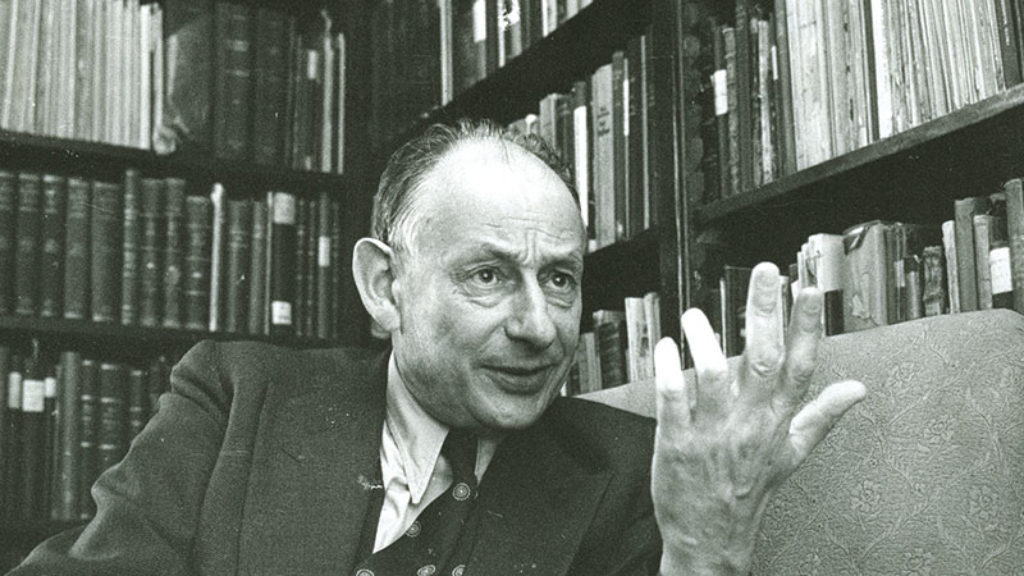
The Secret Metaphysician
While a new crop of biographies about Gershom Scholem all, in one way or another, seek to account for the great man's fascination, they are themselves evidence of Scholem’s ongoing allure.
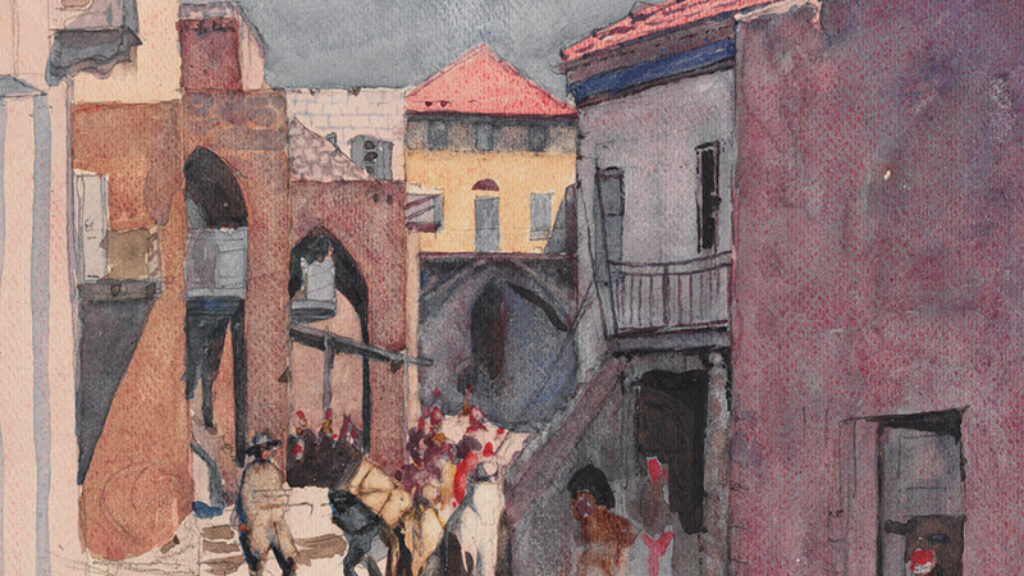
Wishful Republic
What lessons can be learned from the city of Haifa, and what does its culture suggest about the likelihood and limitations of a binational state?
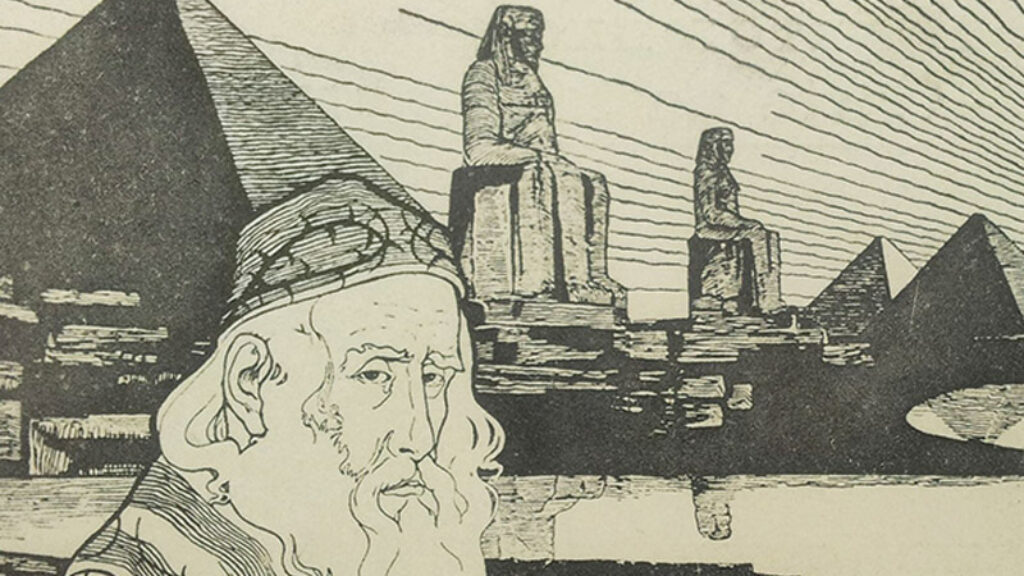
Days of Redemption
Did early Zionists abandon Messianism or inherit it? Or, as Arieh Saposnik argues, did they do something more subtle and interesting?

Comments
You must log in to comment Log In